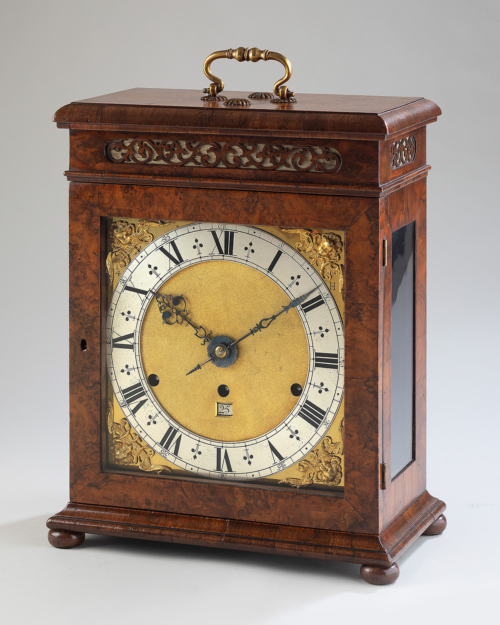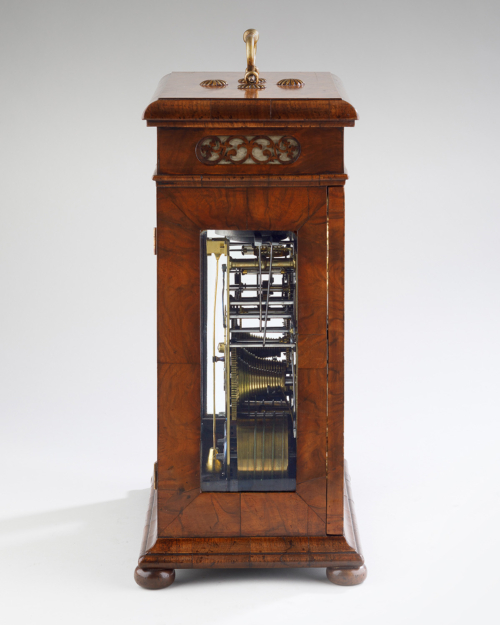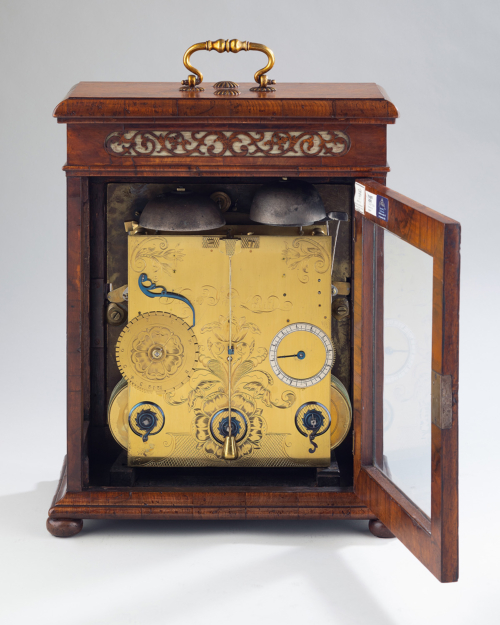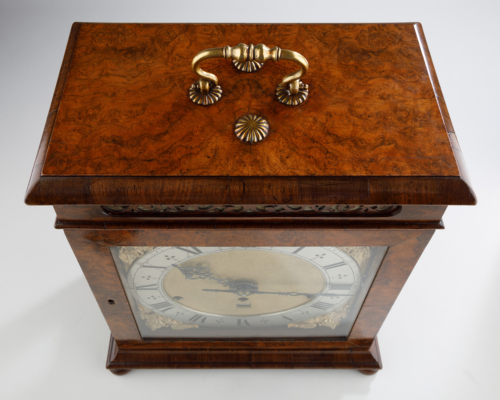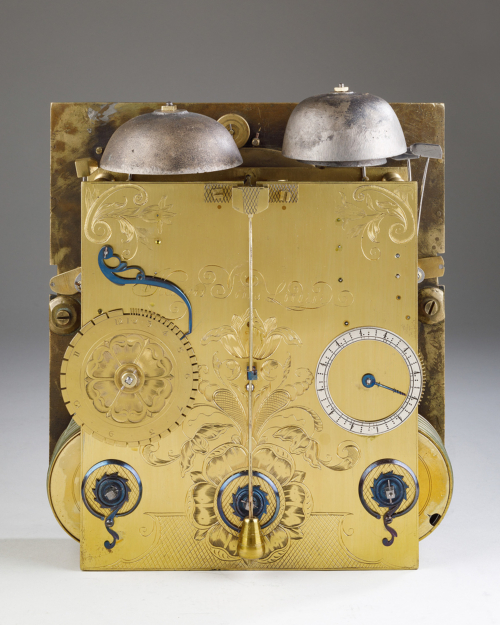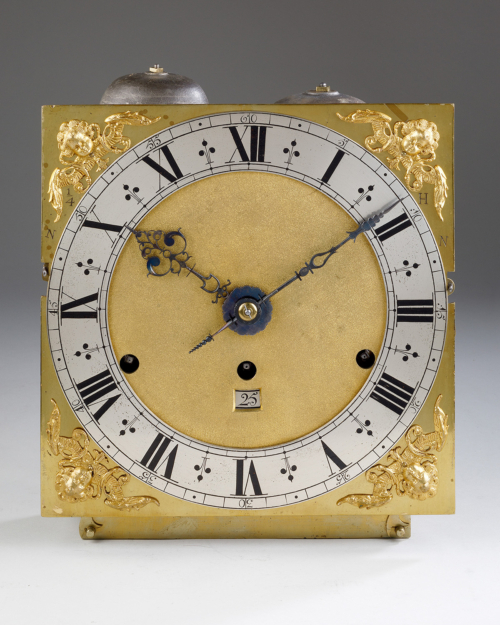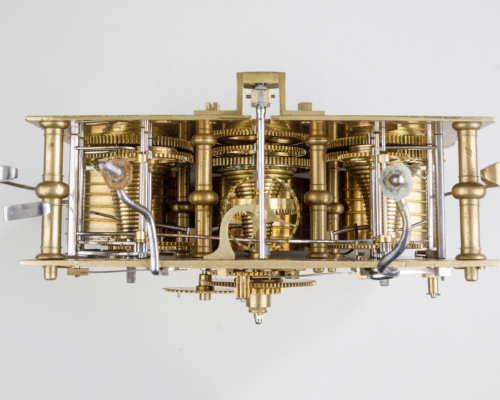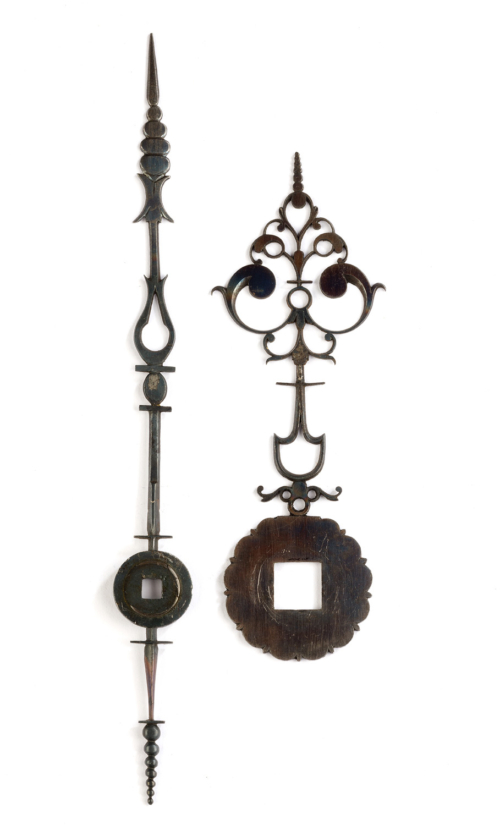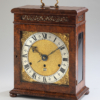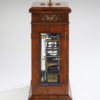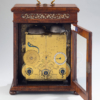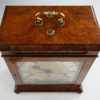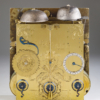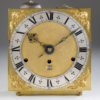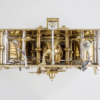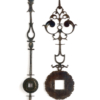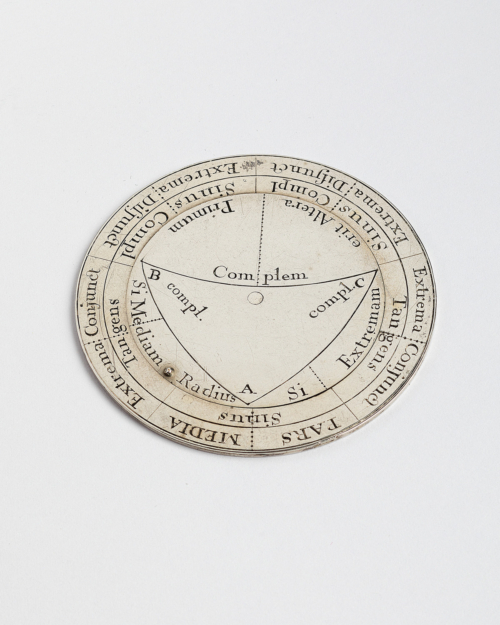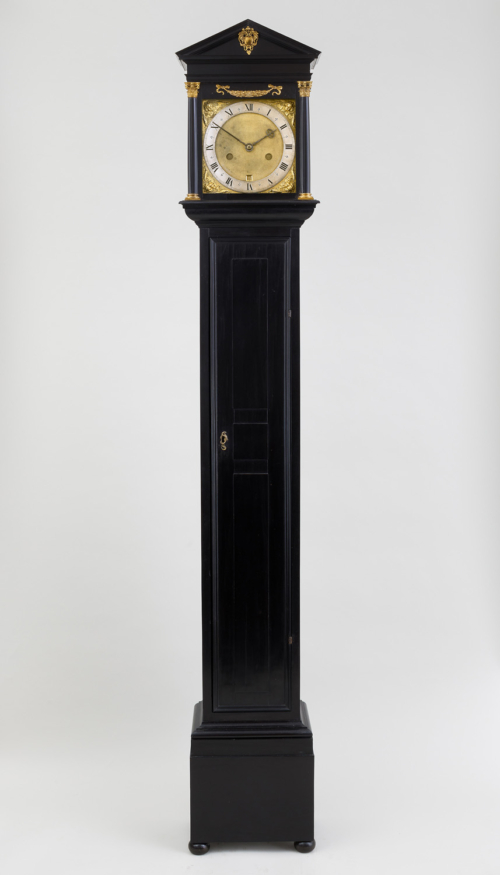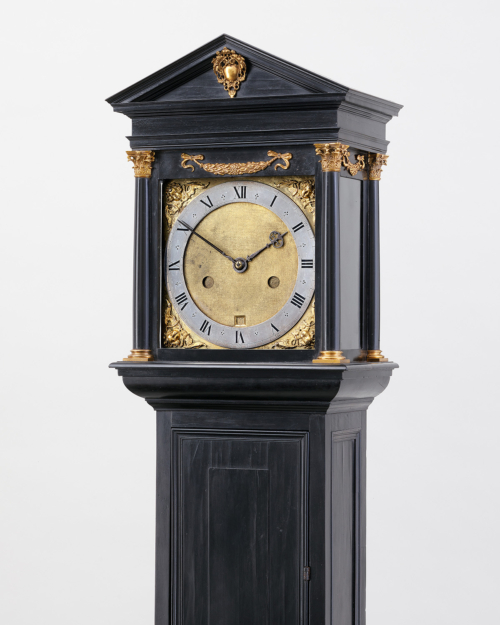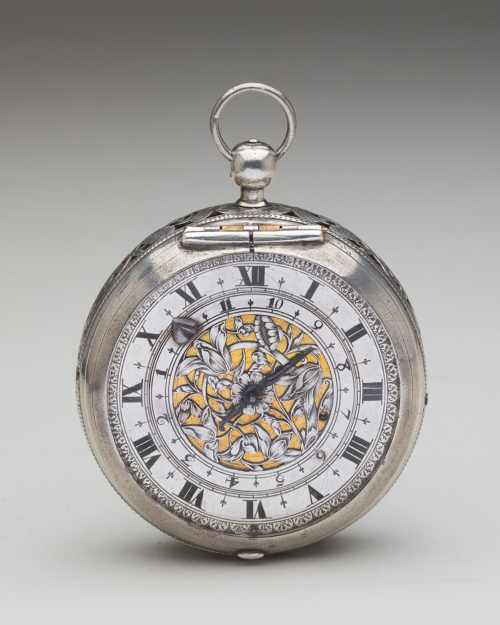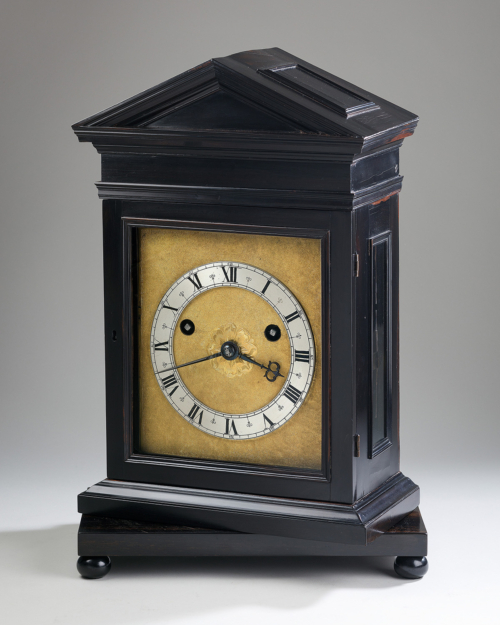| Stock No. | Exhibit No.15 |
| Height | 17 inches (432 mm) |
| Case | The large well-proportioned burr walnut veneered restored flat-top ‘transitional’ case surmounted by a scroll-knopped brass handle, hinged with ribbed brass pommel plates and matching stops. The bold convex blockmoulding with a step beneath, crowning an architectural frieze inset with walnut D-ended foliate-pierced sound frets to the front, sides and back. All above the mitre-veneered dial door without frame mouldings to the glazing, the side apertures glazed to match the front door, and mitre-veneered in burrwalnut. The back of the case is inset with a similarly veneered and glazed door of a true table clock, displaying the integration of the countwheels and set up clicks within the backplate decoration. The base has a bold walnut cavetto/ovolo block-moulding and the whole case rests on four walnut bun feet. |
| Dial | The 9½ inch (245 mm) square gilt-brass dial with finely matted centre that has a date aperture and three winding holes, set almost in line. The narrow silvered chapter ring with Roman hours, fleur-de-lys half-hour markers and Arabic minutes within the divisions, and very fine quality pierced and chamfered blued steel hands, with two strike/silent levers at IX and III, marked for ¼/N and H/N. The corners set with four well-chased gilt-brass winged cherub spandrels and the dial is fixed to the frontplate by four pinned dial feet. |
| Movement | The superb quality movement has eight ringed baluster pillars with long swanneck latches; the three wheel trains have spring barrels with outside set-up clicks and early-type fusees, each with large greatwheels; the going train has a restored knife-edge verge escapement and short bob pendulum with hatch-engraved engraved backcock; the hour strike train is governed on the backplate from an extension of the hour train arbor by a large brass countwheel, engraved with a Tudor rose and Arabic hours, for the hours to be struck on all four quarters on a bell above the plates. The ting-tang quarter train is governed by 4 studs to the quarter pinwheel, spaced as on a countwheel, to index the quarters, as indicated by a delicate blued steel pointer mounted from an extension of the quarter train fusee arbor, against a small silvered division ring, every quarter in the hour dotmarked and numbered 4 for the actual hour itself, for a full 12-hour cycle, the quarters setting off the hours via a lever within the plates. The two Strike/Silent levers simply lift-off the hour or quarter hammers, allowing the trains to stay in sequence. The symmetrically engraved backplate is exceptional, the top corners each opposed with a scroll and single tulip with leaves, above the high signature, in early cursive script, Henricus Jones Londini. Below it, the centre of each blued steel click is cross-hatched, the going train click further decorated with a Tudor rose atop a cross-hatched curve-sided pedestal, with a spray of tulip flowers, stamen and foliage emanating up the centre between the hour countwheel and quarter indication dial. The whole movement resting on two seat blocks and secured to the case with dial turns behind III and IX. |
| Duration | 8 days |
| Provenance | George Dunne Collection, and sold Christie’s, 18 June 1912, lot 41; |
| Literature | Antiquarian Horology 1992, RA Lee advert, p.532; |
| Escapement | Knife-edge verge with short bob pendulum |
The ‘Masterpiece’ Jones. Circa 1673
An exceptional Charles II full Grande Sonnerie striking burr walnut verge ‘transitional’ table clock by Henry Jones, London
Sold
Additional information
| Dimensions | 5827373 cm |
|---|

